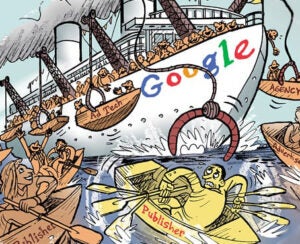 “On TV And Video” is a column exploring opportunities and challenges in programmatic TV and video.
“On TV And Video” is a column exploring opportunities and challenges in programmatic TV and video.
Today’s column is written by Manny Puentes, chief technology officer at Altitude Digital.
The ad tech LUMAscape has long been contracting, but one categorical staple of the cluttered landscape is now in danger of disappearing entirely.
The supply-side platform (SSP) was once the only way for a publisher to access the open auction engine and connect to demand-side platforms (DSPs). But SSPs haven’t been evolving fast enough to meet the needs of the market, particularly in an era where quality video inventory is always in short supply and publishers are becoming more technologically savvy.
Verification issues and Deal ID inefficiencies are just a few signs that the SSP era is coming to an end.
Increased Verification Pressures
As concerns about fraud and viewability have grown, the use of Integral Ad Science, Moat and other third-party verification companies have become a common required addition to media buys. Unfortunately for publishers, much of the verification happens after a campaign has completed, meaning publishers have to make good on impressions that were determined to be nonhuman or unviewable. In an age where video impressions are already limited, this puts undue pressure on publishers to tighten the control over their inventory.
Different verification partners also look at different data points to determine these factors, naturally giving a varied statistical set based on each partner. This makes it especially challenging for publishers to effectively manage their inventory in advance. SSPs might work with a single specific verification partner, but the advertising side only wants to transact based on data with their preferred partner. While publishers may have once been able to rely on their SSP to provide a high return on investment by exposing their inventory to multiple demand sources, that value is being chipped away by these common claw-backs.
Publishers are now going straight to the verification partners and creating relationships so they can take back control, understand their inventory and manage it more directly than they could with an SSP. Publishers are also pushing for the implementation of pre-bid technology within the programmatic pipes, so they can funnel the right inventory to campaigns marked for viewability or brand safety based on the right partner without waste.
Inefficiencies Of The Deal ID
In addition to incorporating additional third-party verification vendors, advertisers increasingly have looked to buy inventory, particularly video inventory, through private marketplaces and through Deal IDs. However, with every hop that has to occur between publisher, SSP and DSP, the Deal ID data becomes cumbersome and a workflow liability, leading to publishers losing out. SSPs also haven’t done a good job at successfully leveraging first-party publisher data through this mechanism, so they’re also sacrificing higher CPMs when they can’t effectively pass in-depth user information.
Rather than using an inefficient deal ID through their SSP, publishers are better off striking direct deals or integrating directly with DSPs in order to effectively share data and provide the highest return for their inventory.
Future Business Models
Many companies in the industry, particularly SSPs, have long transacted on a revenue-share basis, as a percentage of overall media spend. As publishers become more experienced with programmatic and increasingly work with advertisers directly through programmatic pipes, SSPs and this pricing model are being phased out.
Publishers are looking for solutions to meet their programmatic problems. They want to work directly with advertisers and leverage their own first-party data – completely outside of the traditional supply-side chain. By advocating for the true market value for their inventory, publishers will drive the creation of new technologies and define a brand new programmatic landscape.
Follow Manny Puentes (@epuentes), Altitude Digital (@AltitudeDP) and AdExchanger (@adexchanger) on Twitter.












